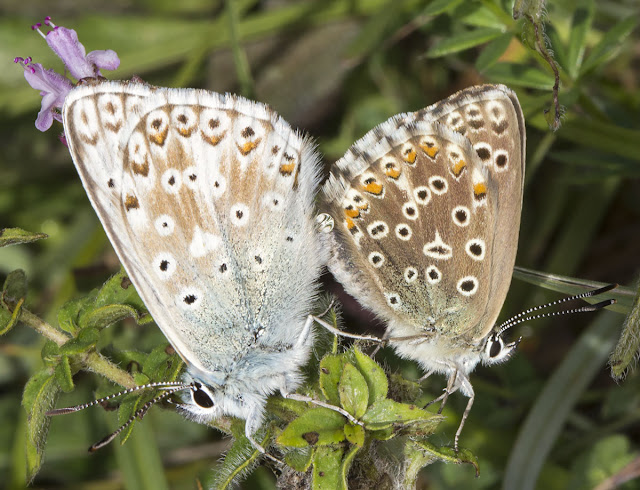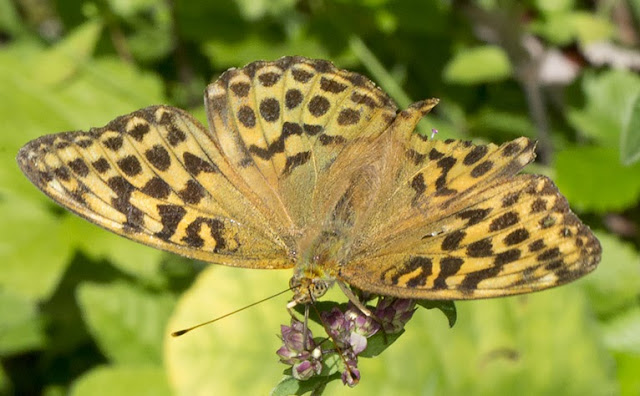 |
| The hillside above Shoreham on 3 August 2013. |
Wow, doesn't the iPhone pimp up its photographs? But it did look good. This was another Orpington Field Club trip, this time to a hillside above Shoreham that is known for Chalkhill Blue butterflies. While they aren't rare, you don't see them just anywhere.
This is the same Darent Valley I showed in a post about a
walk from Otford back in February. You can see the war memorial, a white cross cut into the hillside.
These were the butterflies we came for.
 |
| Chalkhill Blue, Lysandra coridon, on Small Scabious, Scabiosa columbaria. 3 August 2013. |
At first there were a few, as well as other butterflies, insects and plants. Then the sun went behind a cloud. As it emerged and lit up the hillside, suddenly butterflies rose from all over the grass and started flitting about. It was like a scene from the past, when we are assured that butterflies travelled in flocks. There were mating pairs, too.
 |
| Chalkhill Blue, Lysandra coridon. Mating pair. 3 August 2013. |
The other butterflies included this Silver-washed Fritillary, a little tattered, that we couldn't get very close to.
 |
| Silver-washed Fritillary, Argynnis paphia. Female. Shoreham, 3 August 2013. |
And this Large White.
 |
| Large White, Pieris brassicae, on Common Knapweed, Centaurea nigra. Shoreham, 3 August 2013. |
This is what we used to call a Cabbage White when I was young, but as there are other white butterflies that lay eggs on cabbages, Large White turns out to be a more useful name, however bland it may seem.
Of course, there were moths too ...
 |
| Six-spot Burnet, Zygaena filipendula stephensi. Zygaenidae. Shoreham, 3 August 2013. |
This Six-spot Burnet is a lot like a butterfly. It flies by day, feeds the same way, and doesn't have feathery antennae. It's very reflective. The wings and antennae are black in the sunlight and it's only the flash that makes them look silvery or blue.














